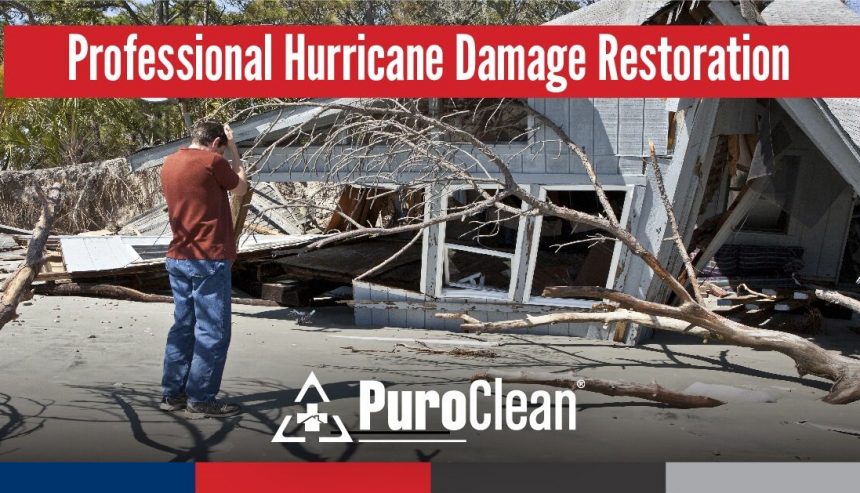Table of Contents
What to Do After Hurricane Damage in Florida
Over the past few days we have heard of hurricane Helene and the most recent hurricane Milton which caused disaster in Florida, but each time one hits, the devastation can leave homeowners overwhelmed. From powerful winds to catastrophic flooding, hurricane damage is both destructive and dangerous.
In the aftermath of a hurricane, knowing the right steps to take can make a significant difference in restoring your property and ensuring your safety.
Things to Do After Hurricane Damage in Florida
Here’s a comprehensive guide on what to do after experiencing hurricane damage, and why calling in professionals is often the best course of action.
1. Prioritize Safety First
The first priority after a hurricane is to ensure your safety and that of your family. There are numerous hazards present in the immediate aftermath, and it’s important to be cautious:
Avoid flooded areas: Floodwater can carry contaminants, such as chemicals, sewage, or even dangerous wildlife. It’s also possible that electrical currents are running through standing water.
Turn off utilities: If there is visible damage to your home, turn off the electricity, gas, and water to prevent further hazards like fires, gas leaks, or water damage. If you’re unsure how to do this safely, wait for professionals.
Watch for structural damage: Before re-entering your home, inspect it for any visible signs of structural damage such as cracks in the walls, sagging ceilings, or shifted foundations. Avoid entering if there is any sign the building is unstable.
2. Document the Damage
Before any cleanup or repairs begin, it’s critical to document the damage for insurance purposes. Use your phone to take clear photos and videos of all visible damage, both inside and outside your home. Focus on:
Structural damage (roof, walls, windows, etc.)
Water damage in various parts of the house (floors, ceilings, basement)
Damaged personal belongings (furniture, electronics, appliances)
Signs of mold or rot starting to form
This documentation will be invaluable when filing your insurance claim, helping you get the compensation you need to begin the restoration process.
3. Contact Your Insurance Company
Once you have safely documented the damage, contact your insurance company to begin the claims process. Provide them with detailed information about the damage, including photos and videos. They will likely send an adjuster to assess the damage in person.
Some important tips when working with your insurance company:
Don’t delay: Many insurance policies require timely reporting of damage, so be sure to reach out as soon as it is safe.
Know your policy: Understand what your homeowners’ insurance covers, especially if you live in a flood-prone area. You may need separate flood insurance, as standard policies often don’t cover flooding.
Keep receipts: If you need to stay in temporary housing or purchase supplies, keep receipts as they may be reimbursable.
4. Mitigate Further Damage
After a hurricane, your next step should be to take action to prevent further damage to your property. This is where professionals can be particularly helpful, but you can start with some basic measures:
Cover holes and broken windows: Use tarps, plywood, or plastic sheets to cover any openings in your roof, windows, or walls to prevent rain and animals from entering.
Remove standing water: If it’s safe, use a pump or wet/dry vacuum to start removing water from flooded areas. However, if there’s significant water damage, especially in areas like the basement, this is best handled by professionals to avoid the risk of electrocution or further structural damage.
Ventilate the house: Open windows and use fans or dehumidifiers to begin drying out damp areas. Mold can begin forming within 24-48 hours, so this step is crucial in preventing further problems.
5. Call in Professional Restoration Services
While you may want to handle some tasks yourself, the scale and complexity of hurricane damage often require professional intervention. Restoration professionals have the experience, equipment, and training to handle the situation efficiently and safely.
Here’s why calling in a professional restoration company is a smart move:
Specialized Equipment: Professional restoration companies use industrial-grade equipment like high-powered pumps, air movers, dehumidifiers, and moisture meters to remove water and dry out your home. This helps prevent mold and mildew growth, which can cause health problems.
Mold Remediation: In Florida’s humid climate, mold can start growing very quickly after a hurricane. A professional restoration company can assess the extent of mold damage and remove it safely, ensuring that your home is not only restored but also safe to live in.
Structural Repairs: Significant structural damage, such as a compromised foundation or roof, requires specialized knowledge and skills. Restoration professionals are trained to identify and fix these issues to ensure the stability and safety of your home.
Insurance Liaison: Many restoration companies will work directly with your insurance provider to help manage the claims process. They can provide detailed damage assessments, estimates, and reports, helping you avoid any unnecessary delays in receiving your compensation.
6. The Importance of Choosing the Right Restoration Company
When choosing a restoration company, it’s essential to select one with a strong reputation for professionalism and reliability. Here are some factors to consider:
Licensed and insured: Always choose a licensed and insured restoration company. This ensures that they meet industry standards and that you are protected in case of accidents or further damage.
Experience with hurricane damage: Not all restoration companies are equipped to handle the specific challenges posed by hurricane damage. Look for a company that has experience with storm-related repairs and knows how to work in Florida’s unique climate.
24/7 Emergency Services: Hurricanes don’t wait for business hours, and neither should you. Choose a restoration company that offers 24/7 emergency response to ensure help is available when you need it most.
7. Final Steps: Rebuild and Prepare
Once your home is restored, you’ll want to take steps to prepare for the next storm. Hurricanes are an inevitable part of living in Florida, but being prepared can help minimize future damage. Some important steps include:
Strengthen your home: Consider making improvements such as installing storm shutters, reinforcing your roof, or upgrading to impact-resistant windows.
Create an emergency plan: Have a plan in place for future storms, including evacuation routes, an emergency kit, and important documents in a waterproof container.
Review your insurance: After going through the claims process, you may find gaps in your coverage. Make sure you’re adequately insured for future hurricane seasons, including flood insurance if necessary.
Hurricane damage can feel overwhelming, but with the right steps and professional help, you can recover and restore your home. At the end of the day, your safety and the long-term health of your property should be the top priorities.
Document the damage, mitigate further issues where possible, and most importantly, rely on experienced professionals to handle the complex task of restoration. With the right support, you’ll be back on your feet and better prepared for the future in no time.
If you’ve recently experienced hurricane damage in Florida, don’t hesitate to contact PuroClean Emergency Recovery Services on (877) 750-7876. PuroClean Emergency Recovery Services, with their years of experience and IICRC certification, stand as your reliable partners in home restoration.
Our team of licensed professionals is available 24/7 to help you restore your home and get your life back to normal as quickly as possible.




 PuroClean Emergency Recovery Services
PuroClean Emergency Recovery Services